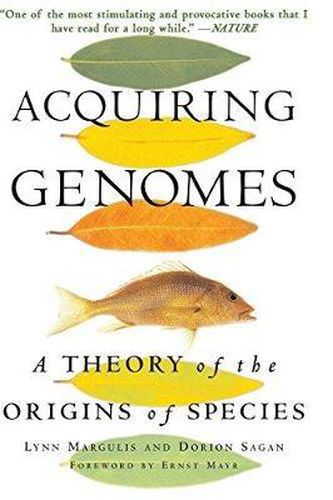Readings Newsletter
Become a Readings Member to make your shopping experience even easier.
Sign in or sign up for free!
You’re not far away from qualifying for FREE standard shipping within Australia
You’ve qualified for FREE standard shipping within Australia
The cart is loading…






How do new species evolve? Although Darwin identified\ninherited variation as the creative force in evolution, he never\nformally speculated where it comes from. His successors thought\nthat new species arise from the gradual accumulation of random\nmutations of DNA. But despite its acceptance in every major\ntextbook, there is no documented instance of it. Lynn Margulis and\nDorion Sagan take a radically new approach to this question. They\nshow that speciation events are not, in fact, rare or hard to\nobserve. Genomes are acquired by infection, by feeding, and by\nother ecological associations, and then inherited. Acquiring\nGenomes is the first work to integrate and analyze the\noverwhelming mass of evidence for the role of bacterial and other\nsymbioses in the creation of plant and animal diversity. It\nprovides the most powerful explanation of speciation yet\ngiven.\n\n
$9.00 standard shipping within Australia
FREE standard shipping within Australia for orders over $100.00
Express & International shipping calculated at checkout
How do new species evolve? Although Darwin identified\ninherited variation as the creative force in evolution, he never\nformally speculated where it comes from. His successors thought\nthat new species arise from the gradual accumulation of random\nmutations of DNA. But despite its acceptance in every major\ntextbook, there is no documented instance of it. Lynn Margulis and\nDorion Sagan take a radically new approach to this question. They\nshow that speciation events are not, in fact, rare or hard to\nobserve. Genomes are acquired by infection, by feeding, and by\nother ecological associations, and then inherited. Acquiring\nGenomes is the first work to integrate and analyze the\noverwhelming mass of evidence for the role of bacterial and other\nsymbioses in the creation of plant and animal diversity. It\nprovides the most powerful explanation of speciation yet\ngiven.\n\n